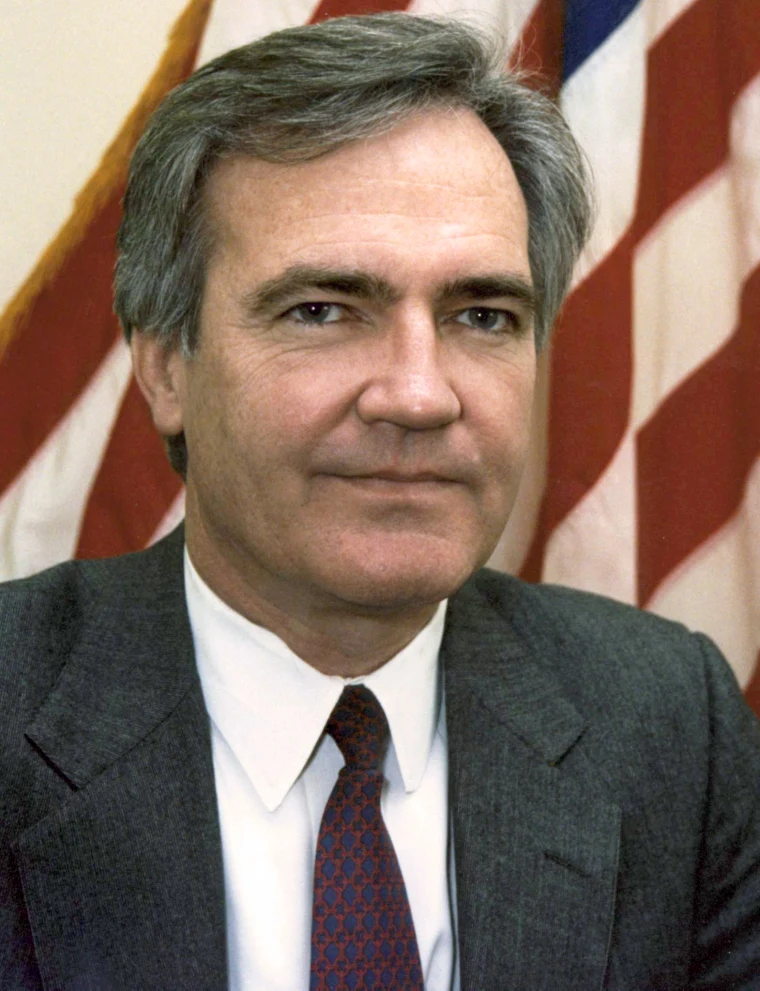(This was one of the first Conservative.to articles and is published as it originally was from our archives).
The following is an excerpt taken from “One Nation Under Blackmail – Vol. 2: The Sordid Union Between Intelligence and Organized Crime that Gave Rise to Jeffrey Epstein“:
On July 20, 1993, between Epstein’s first White House meeting and the September donor dinner, Vince Foster’s lifeless body was found in Fort Marcy Park. He had last been seen at the White House, yet no exit logs or video footage show him leaving the premises. At the park, those who witnessed the scene were surprised by the lack of blood, as Foster was alleged to have shot himself in the mouth with a revolver,
an act that normally results in a messy, bloody death. In contrast, the amount of blood found at the scene was considered to be minor.
The report produced by Whitewater special counsel Robert Fiske asserted that those pre-sent observed “a large pool of blood” where Foster’s head had been, but other parts of Fiske’s own report contradict this claim and observers of the scene of death, including medical examiner Dr. Donald Haute, denied ever seeing a pool of blood. Haute, who was the only doctor to examine Foster’s body at the park, was not interviewed for the Fiske report. Haute’s own report was reportedly improperly and illegally altered, with one page alleging the gunshot had been “mouth-head” while another alleges it was in fact “mouth-neck.” In addition, the presence of a bullet wound in the neck had been attested to by Richard Arthur, a firefighter/paramedic who was at the scene where Foster’s body had been found.
Other oddities include the fact that the murder weapon was unknown to Foster’s wife and family, as he had owned a silver gun, not the black gun observed in photographs of the scene. Furthermore, the bullet that killed Foster was never found. In addition, the FBI appears to have intervened in the investigation by telling eyewitnesses not to report that they had seen cars of other people beside Foster present at the scene. In addition, the FBI was accused of altering the statements of several eyewitnesses.
The autopsy of Foster’s body was also controversial. For instance, Dr. James Beyer, who performed the autopsy, unexpectedly moved the time of the autopsy so it took place a day earlier than planned, meaning that he performed much of the autopsy without observers who had been at the crime scene, as is custom. When those police observers had finally arrived, Beyer had conveniently already removed Foster’s entire tongue and upper palette, obfuscating evidence of the alleged “mouth-neck,” as opposed to “mouth-head,” injury that had been observed in the field by Dr. Haute, Beyer had also spoken to Park Police about the results of X-rays of Foster’s body, but then subsequently claimed those X-rays never existed.
Aside from the death, there is the matter of the unauthorized search of Foster’s office that began between the time the body was found in the park at around 6pm and when Craig Livingston, the director of the White House’s Office of Personnel Security, identified Foster’s body at around 10pm. It was reported by Deseret News that “about an hour after White House aides learned of Foster’s death at 9pm that night, [White House counsel Bernard] Nussbaum, Maggie Williams, Hillary Rodham Clinton’s chief of staff, and Patsy Thomasson, an aide to the White House chief of administration, entered Foster’s office.” A secret service agent had seen Williams “carrying a stack of files from the area of his office” around this time.
Nussbaum later confirmed that he had been in Foster’s office that evening for “a brief, 10-minute search.” He disputed interfering with the investigations, claiming that he was merely “seeking to ‘balance the interests’ of Foster’s privileged communications with the president with the legitimate’ needs of the police.” Nussbaum had made an agreement with the Justice Department that resulted in the official search of Foster’s office taking place two days after his death, on July 22nd.
This unauthorized search may have been related to “a blizzard of phone calls to and from the first lady and her closest friends and aides soon after Foster’s death.” According to the Washington Post, “Congress has heard flatly conflicting sworn accounts of what happened during those days [from the first lady and her friends and aides]. A parade of witnesses have described searches of Foster’s office while angry police and Justice Department officials investigating his death were kept at bay. Missing files and documents have been suddenly discovered and released.”
Perhaps one of the oddest phenomena surrounding Vince Foster’s death was his supposed suicide note or “resignation letter,” which the White House later said had been found in Foster’s briefcase. For reasons still unknown, the White House waited to report the note’s existence until about 30 hours after it had allegedly
been discovered.40 Adding to the confusion is the fact that police had observed Foster’s briefcase as having been empty when his office was searched in the immediate aftermath of his death.
There was also an unusual amount of secrecy around the note as well, as photographing the note was forbidden and it was exempt from Freedom of Information Act requests. However, a copy was subsequently obtained by James Davidson, editor of a financial newsletter. Davidson arranged for three hand-writing experts to examine the note and all three judged it to be a forgery. Subsequently released documents found that Hillary Clinton had been the main person “behind the 30-hour delay in releasing late White House counsel Vincent Foster’s suicide note to authorities.”
Hillary Clinton’s personal involvement is notable, as she is directly mentioned in the alleged “suicide note.” The note states in particular that “The Usher’s Office plotted to have excessive costs incurred, taking advantage of Kaki [Hockersmith] and HRC [Hillary Rodham Clinton].”
The New York Times wrote shortly after the note’s “discovery” that this part of the note referred to “Hillary Rodham Clinton’s redecoration plans for the White House” and cryptically charged that the Usher’s Office, which oversees renovations, was using those plans against Clinton and her decorator Kaki Hockersmith. A subsequent summary of the note’s contents, published by the New York Times that November, stated that, in this portion of the note, “Mr. Foster alluded to cost overruns and schemes associated with the redecorating, which he did not describe but feared would embarrass the President and Mrs. Clinton.”
Given that the “suicide note” was highly suspicious and most likely a forgery, this would mean that the note, and its assertions about the renovation endeavor, had been placed there with the intention, not only of being discovered, but of seeding a particular narrative about the money flows related to the White House renovation. The inclusion of this line seems meant to publicly absolve Kaki Hockersmith and Hillary Clinton from wrongdoing while also casting shade on the Usher’s Office, potentially stopping anyone at that office from advancing accusations against the First Lady or her associates as it related to financial impropriety that may have been associated with the redecoration effort. If the note was indeed a forgery intended to publicly absolve Hillary Clinton and Kaki Hockersmith from a potential role in financial “schemes” related to the renovation, it would suggest that the opposite narrative – i.e.that Hillary Clinton and the renovation were involved in suspect financial schemes – was closer to the truth.
This seems more than plausible because, as the New York Times article notes, “Mr. Foster’s office would have decided whether there was anything inappropriate about the private funds donated for the renovation” and [his] role was to advise on the legality of anything relating to the executive office. Had something been uncovered by either Foster or the Usher’s office about the recent donations to the White House
Historical Association? Given that the donors included figures deeply embedded in shady financial networks, like Jeffrey Epstein, Clark Clifford, and C. Gerald Goldsmith, it’s certainly possible.
However, soon after the note was made public, both the Usher’s Office and Clinton de-nied any impropriety had taken place. It was also noted that the sizable gap between initial cost estimates made by the usher’s office and the final cost was merely due to a “miscommunication” between the Usher’s Office and Hockersmith, with Hockersmith allegedly having underestimated the cost of labor and overtime pay. In an August 1993 statement, Clinton stated that this particular “miscommunication” had since been resolved. Gary Walters, who had been chief usher since 1986, told the Times in 1993 that he had “no idea what he [Foster] was thinking when the note was written.”
This seemingly rapid turnaround from the narrative seeded by Foster’s alleged note makes it unclear what, if anything, transpired in the relatively short window of time between that note’s creation and the New York Times report a few weeks later. Was this “miscommunication” resolved or did the note’s narrative pressure the Usher’s Office to drop potential complaints? Adding to the intrigue is the fact that the WhiteHouse “refused to identify anyone associated with the Historical Association fundraising at
the time.” One can only speculate about the White House’s reasons, though the level of secrecy, the involvement of Epstein/Maxwell and similar actors as well as the Vince Foster connection strongly suggests that this particular fundraiser was related to much more than simply the reupholstering of furniture and the swapping of drapes.
FOSTERGATE
In 1995, journalist James R. Norman, then working as “Forbes’ ace investigative reporter” and a senior editor at the magazine, wrote a cover story for Forbes entitled “Oil! Guns! Greed!’, which centered on Chase Manhattan bank and allegations relating to “bank fraud, oil trading, and bombs.” The connections he uncovered there led him to develop another and arguably much more ground-breaking investigation, which bore the title “Fostergate.”
On April 17, 1995, Norman sent a letter to Michael D. McCurry, White House Press Secretary, the contents of which were later leaked onto the early internet. In that letter Norman had informed McCurry that Forbes was “preparing an article for immediate publication” and was seeking comment on several allegations contained in the reporting, of which there were ten in total. A few of them deal with Foster’s role with the Jackson Stephens-owned company Systematics, previously discussed in chapter 9. Those allegations, as Norman wrote them, were as follows:
1.) That Vincent W. Foster, while White House Deputy Counsel, maintained a Swiss bank account.
2.) That funds were paid into that account by a foreign government, specifically the State of
Israel.
3.) That shortly before his death and coincident with the onset of severe and acute depression, Vincent Foster learned he was under investigation by the CIA for espionage.
4.) That this information was made available to him by Hillary Rodham Clinton.
5.) That while he was White House Deputy Counsel and for many years prior, Vincent Foster had been a behind-the-scenes control person on behalf of the National Security Agency for Systematics, a bank data processing company integrally involved in a highly secret intelligence effort to monitor world bank transactions.
6.) That Systematics was also involved in laundering: funds from covert operations, including drug and arms sales related to activities in and around Mena, Ark.
7.) That through Systematics’ relationship with E-Systems, Vincent Foster may have had access to highly sensitive code, encryption, and data security information of strategic importance.
8.) That both prior to and after his death, documents relating to Systematics were removed from Vincent Foster’s office in the White House.
9.) That the meeting at the Cardozo (Landau) estate on the eastern shore of Maryland on the weekend before Vincent Foster’s death was attended by, among others, George Stephanopoulos.
10.) That Hillary Rodham Clinton was also a beneficiary of funds from Foster’s Swiss account.
The White House responded on April 20, and stated that the allegations were all “outrageous” and “baseless.” Forbes killed Norman’s story, which was due to be published in May with the magazine’s editor James Michaels claiming that the story would not be published because “many of the story’s sources were not credible.” Norman’s story relied on several anonymous sources in intelligence, including the CIA, and, as can be surmised from the allegations above, centered around “charges that Foster had been under Central Intelligence Agency surveillance for selling US secrets to Israel and secreting the proceeds in a Swiss bank” account. It also alleged that Hillary Clinton had been involved in the selling of those secrets alongside Foster.
Norman eventually published “Fostergate” in a small magazine called Media Bypass. After publication there, he wrote to Forbes’ editor James Michaels, imploring him to reconsider publishing the article in Forbes, where Norman was still employed. The letter informed Michaels that Norman had obtained significant, additional corroboration of his reporting. This included “credit card and airline frequent flier records that VWF [Vince W. Foster] was making periodic one-day trips to Switzerland” and that “a staffer on Jim Leach’s House Banking Committee has confirmed, on tape, that VWF had a Swiss bank account.”
Norman continued defending his reporting to Michaels by noting that “Foster’s former executive assistant, Deborah Gorham, has testified under oath in a private deposition that Foster had her put two inch-thick NSA binders in Bernie Nussbaum’s safe. This establishes beyond a doubt that Foster had access to sensitive NSA documents.” Norman noted that his sources stated that “one of the binders contained presidential authentication codes required to authorize the use of nuclear weapons or other significant military action.” Foster did not have the security clearance necessary to obtain that information, Norman notes, meaning he “must have gotten them from someone in or close to the oval office.”
Norman identified this “someone” as Hillary Rodham Clinton. In his letter to Michaels, he states the following:
Pouring gasoline on this fire is the revelation over the past weekend that Lisa Foster, Vince’s wife, received a mysterious $286,000-plus payment, which came through Foster’s sister Sheila Anthony, an Assistant Attorney General at the time, just four days before Foster’s death. This clearly smacks of a hush-money payment. And apparently Foster wouldn’t take the bait, despite being forced into a tight financial bind from the loss of his Swiss funds and probably from picking up the tab on all sorts of incidental Clinton campaign
expenses. Faced with the likelihood he would be the fall guy for Hillary’s sale of high-level nuclear code secrets to the Israelis (through Foster), he apparently threatened to dump the whole mess in Bill Clinton’s lap at a one-on-one meeting set for Wednesday morning, July 21, 1993. But Foster never lived that long.
Norman, writing later that year in Media Bypass, noted that Hillary Clinton had not only been a probable “beneficiary” of the funds in Foster’s Swiss bank account, but was also “under suspicion for espionage” at the same time Foster was under counterintelligence surveillance. He also noted that, “Although Systematics attempted to prevent the publication of Fostergate in Media Bypass, the company (Alltel) [formerly Systematics] has not even bothered to demand a retraction of anything published in the [Fostergate] story. Indeed, I have been told by at least four sources that senior officials of the company are now hiring criminal legal defense attorneys, and that Alltel itself is quietly up for sale. The WSJ has offered to help pick up Media Bypass’ legal tab if they are sued (which is unlikely).”
Michaels’s response to the letter was to offer Norman two choices: take indefinite unpaid leave or accept a severance package. Norman resigned from Forbes in response and his Fostergate investigation was subsequently largely forgotten. Norman revealed, both in his letter to Michaels and elsewhere, that major political power players, including Caspar Weinberger had played a critical role in killing his Fostergate story.




